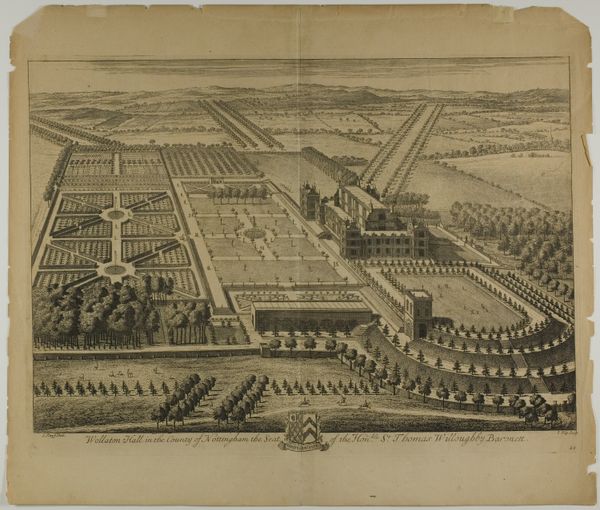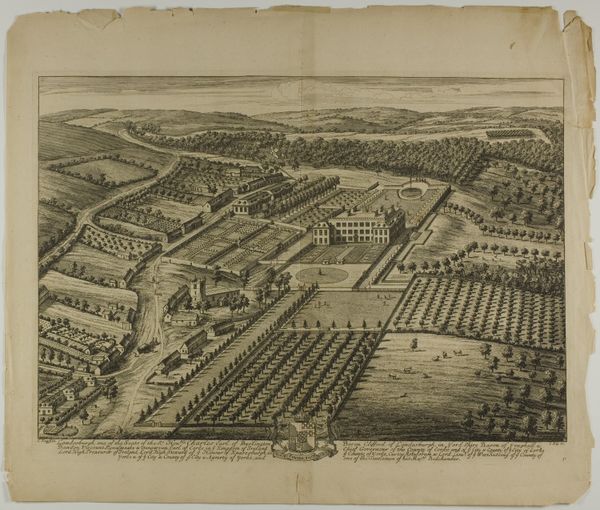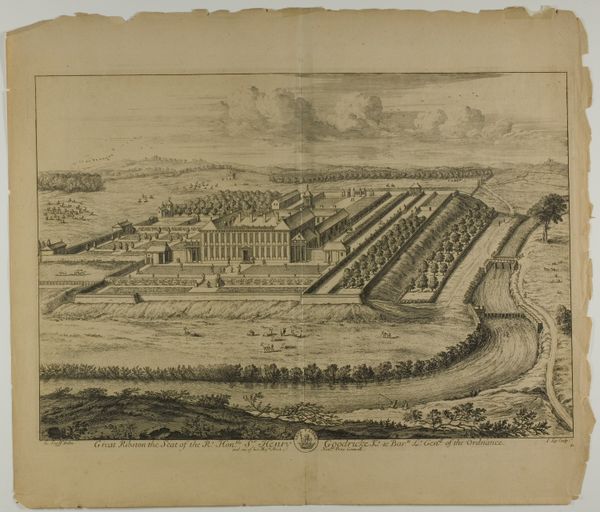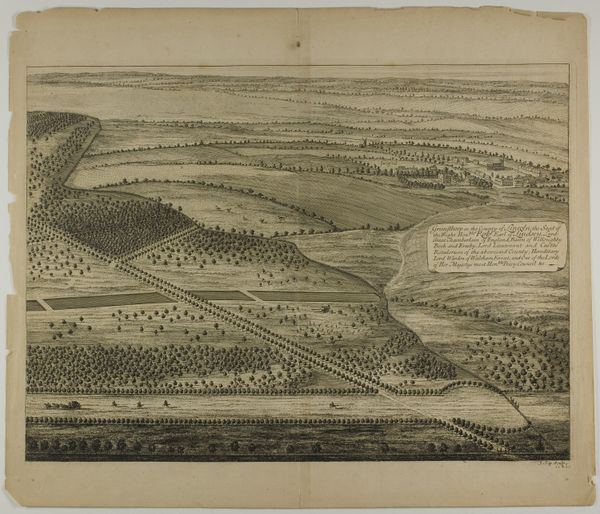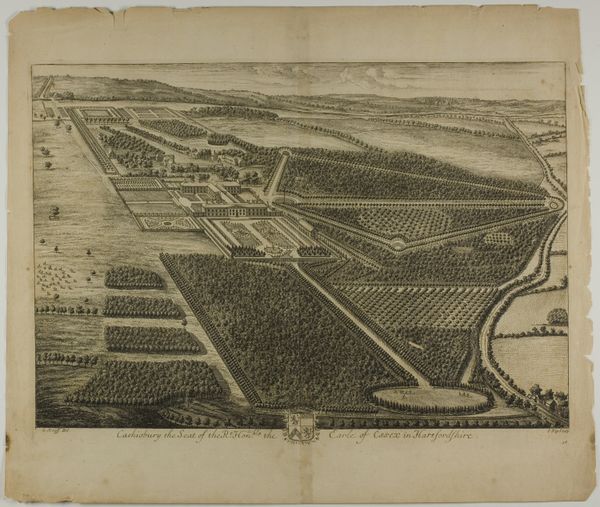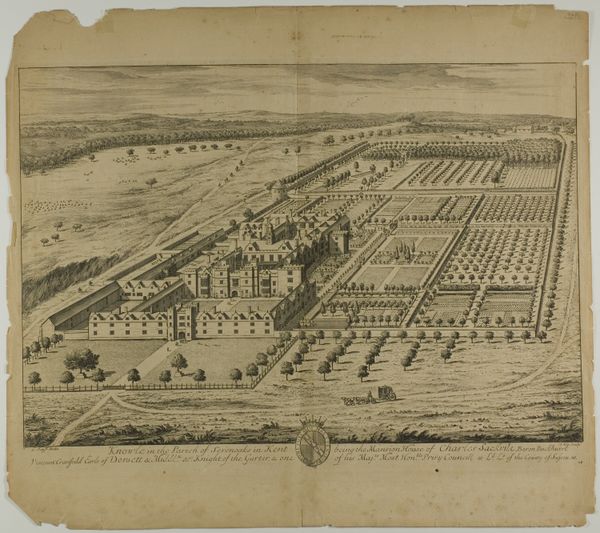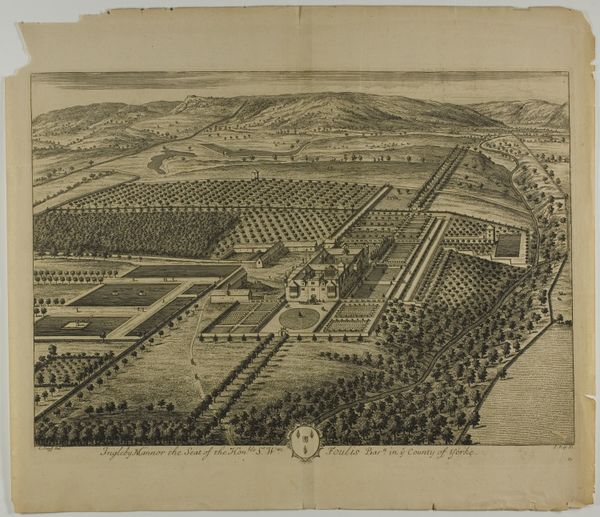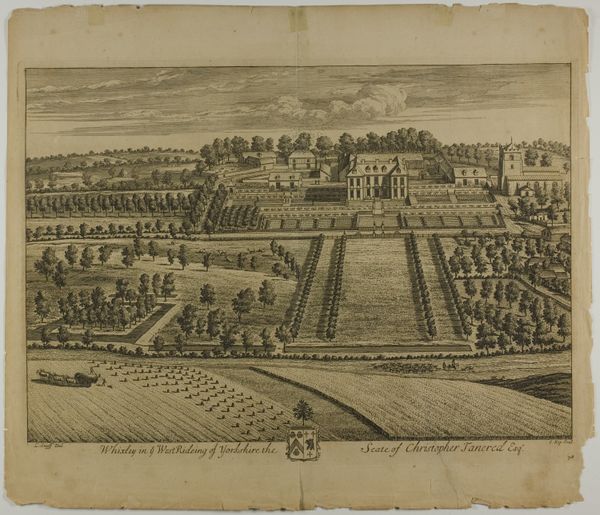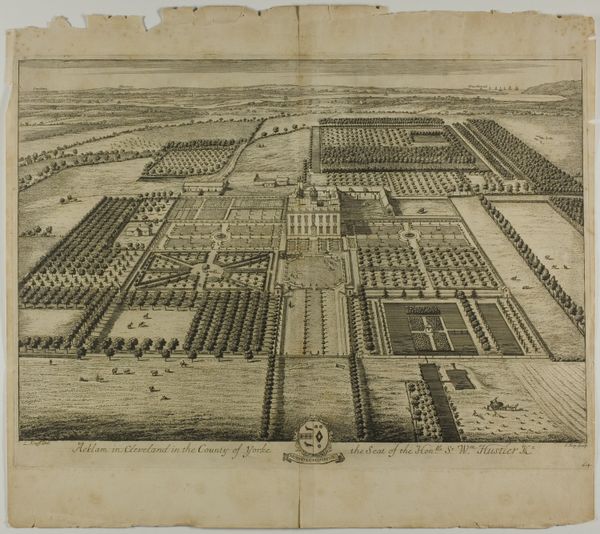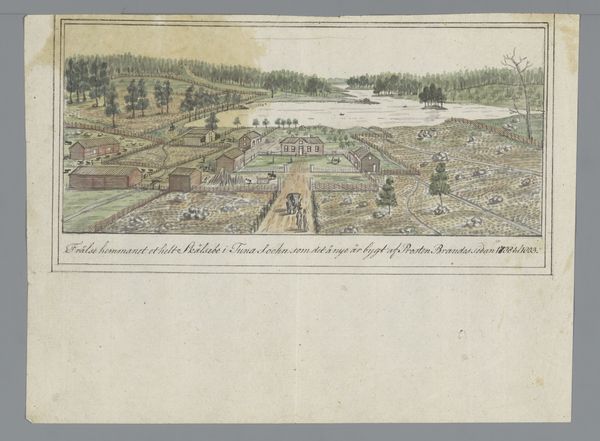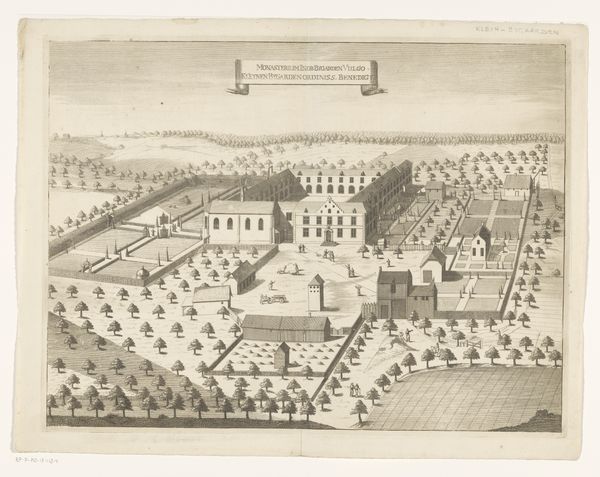
Melton Constable in the County of Norfolk, plate 51 from Britannia Illustrata Possibly 1707
0:00
0:00
drawing, print, etching, paper, engraving
#
drawing
#
baroque
# print
#
etching
#
landscape
#
paper
#
cityscape
#
engraving
Dimensions: 325 × 474 mm (image); 354 × 487 mm (plate); 443 × 516 mm (sheet)
Copyright: Public Domain
This print, made by Johannes Kip around the turn of the 18th century, offers an elevated view of Melton Constable Hall and its gardens. The long, straight avenue, extending far into the horizon, is not merely a road; it's a statement. It's a symbol of control, of man's dominion over nature. Consider how this motif of the allée—the tree-lined avenue—echoes through time. From the grand processional routes of ancient Egypt, symbolizing the pharaoh's power, to the Roman roads that imposed order upon conquered lands, the straight line has always signified authority. Even in the layout of medieval cathedrals, we see the long nave guiding the eye toward the altar, a linear path to the divine. In Melton Constable, the avenue isn't just practical, it's psychological. It appeals to our primal instincts for order and orientation. The human mind seeks patterns, and this long, clear path offers a sense of stability and direction. This avenue embodies an ambition to tame the wild, connecting us to the subconscious desire to impose order on chaos. The avenue extends far beyond the gardens, resurfacing centuries later in modern urban planning, a testament to its enduring appeal.
Comments
No comments
Be the first to comment and join the conversation on the ultimate creative platform.
